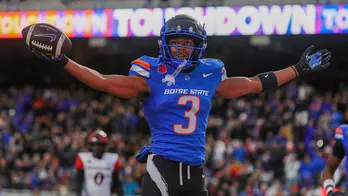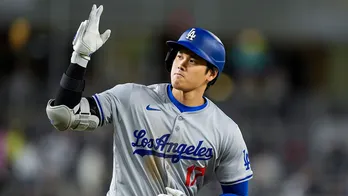Canceled tribal chief White Calf, face of the Redskins, generates new support nationwide
Celebrated Blackfeet chief John Two Guns White Calf was sacrificed on the altar of cancel culture.
Now an effort to save the indigenous hero's legacy as well as larger Native history from a woke agenda is beginning to spread nationwide.
White Calf was the face of the NFL’s Washington Redskins for 48 years. Before receiving that honor, he was one of the most famous Native Americans of the 20th century.
PRO-NATIVE-AMERICAN ACTIVISTS FIGHTING TO SAVE INDIGENOUS TRADITIONS IN NATIONWIDE WAR AGAINST WOKENESS
But then his name, image, achievements — his very existence, really — were erased by the politically connected National Congress of American Indians (NCAI), headquartered in Washington, D.C.
White Calf was erased from the NFL, too. The Redskins, under mounting pressure fueled in large part by the NCAI, dumped its White Calf portrait logo in 2020 and adopted the name Commanders in 2021.
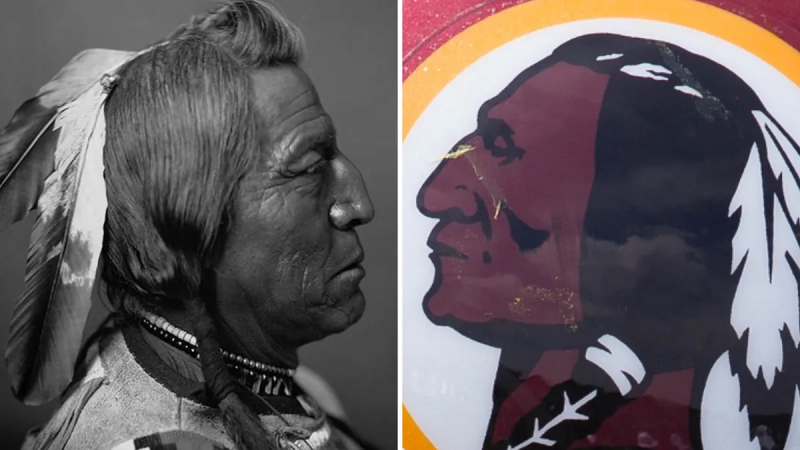
Chief John Two Guns White Calf, left, served as the inspiration for the Washington Redskins logo, right — which represented the NFL franchise on the field for nearly 50 years, from 1972 to 2020. (Getty Images)
"The Redskins were the only minority representation in the entire NFL and it was a real person, not a mascot," historian Andre Billeaudeaux of San Diego, California, the author of "How the Redskins Got Their Name," told Fox News Digital in an interview.
The NCAI counts among its benefactors the George Soros-funded Open Society Foundations. American taxpayers also fund the group.
It receives support from seven federal bureaucracies, including the Department of Defense, according to its own website, as Fox News Digital previously reported.
NATIVE AMERICAN GROUP THAT WANTED ‘REDSKINS’ REMOVAL IS FUNDED BY SOROS FOUNDATION, OTHER LEFTIST ORGS
Beyond the removal of Native logos and representations in pro sports, the NCAI "has tracked the retirement of more than 200 unsanctioned Native ‘themed’ mascots since 2019, and has supported legislation banning the use of these mascots in multiple states," the group said in a statement last year to Fox News Digital.
"The Redskins were the only minority representation in the entire NFL and it was a real person, not a mascot."
Yet "these decisions never have popular support," said Eunice Davidson, a Dakota Sioux and president of the Native American Guardians Association (NAGA), to Fox News Digital last week.
Many of those images were founded up to a century ago to celebrate local Native heritage — and not all were mascots.

Left, Native American Blackfeet Chief John Two Guns White Calf (1872-1934), is shown shaking hands with A. Aaron of Madras, India, as they met at the Twin Cities for the Rotary Convention, circa 1925. (FPG/Archive Photos/Hulton Archive/Getty Images)
Some — like the man who was the face of the Redskins — were real people who made a profound impact on America.
Chief White Calf advanced Native agenda in D.C.
Even before his face was beamed from NFL football fields into millions of American homes each Sunday in the fall, Chief White Calf's name and image were familiar to people all across the United States and elsewhere.
"He provides one of the most readily recognizable images of a Native American in the world," the Native American Heritage Project website reported in 2012.
NEWLY ELECTED SCHOOL BOARD IN PENNSYLVANIA RECLAIMS INDIGENOUS MASCOT, REJECTS CANCEL CULTURE
He was born near Fort Benton, Montana, in 1872, the site states. He was the son of White Calf, chief of the Pikuni Blackfoot.
He achieved international acclaim by fighting to preserve Native American culture.
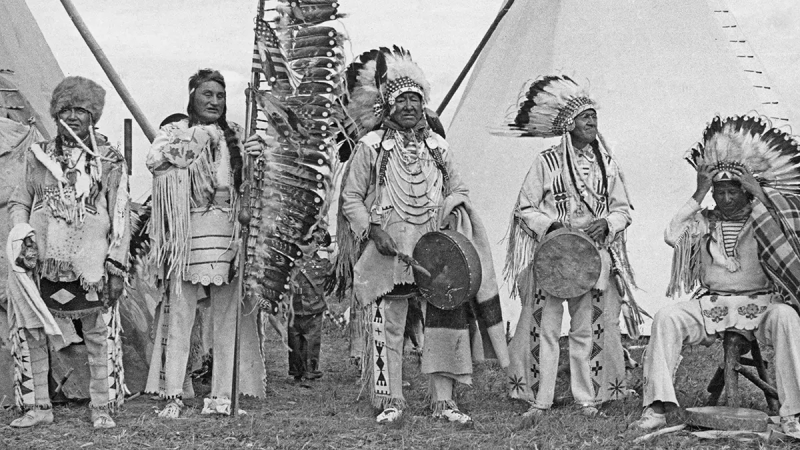
Blackfeet dressed in full ceremonial traditional clothing, Browning, Montana, U.S., circa 1930. (Herbert C. Lanks/FPG/Archive Photos/Getty Images)
"The chief headed a secret group known as the ‘Mad Dog Society’ whose purpose was to protect and sustain the Blackfoot Heritage," according to the Kansas City Public Library.
"The Crazy Dog Society Song," from an album of Blackfoot music, is held in the Smithsonian Institution's collection of Folkways recordings.
The Kansas City Public Library added, "Chief Two Guns was very outspoken about U.S. policies and the mistreatment of Native Americans."
"Chief Two Guns was very outspoken about U.S. policies and the mistreatment of Native Americans."
He championed Native issues in Washington, D.C. — rubbing elbows with President Calvin Coolidge — and appeared to bridge cultures long at odds.
White Calf was, according to multiple sources, the inspiration for the face that appeared on the U.S. Mint's famous 1913 Indian head nickel.
This account of the story is disputed, but the image on the coin bears a striking resemblance to known portraits of White Calf.
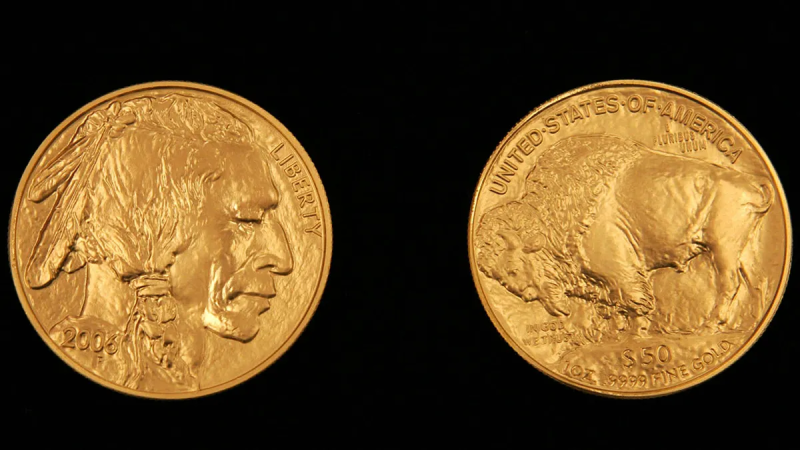
The two sides of the first 24-karat pure gold coin one-ounce replica of the U.S. Mint's Buffalo Nickel of 1913. Blackfeet chief John Two Guns White Calf is reportedly the inspiration for the Native American portrait found on the coin. His portrait later served as the face of the NFL's Washington Redskins from 1972 to 2020. (Daniel Barry/Bloomberg via Getty Images)
White Calf became a spokesman for Glacier National Park in Montana, "where he posed with tourists," according to the Native American Heritage Project and other accounts.
White Calf was so prominent in the United States that his death in 1934 earned a New York Times obituary.
The tribute noted that he helped make President Coolidge "an honorary chief of the same Blackfeet tribe."
Native American icon
The Redskins of the National Football League were founded as the Boston Braves in 1932, playing on the same field as the Boston Braves of baseball's National League.
In the tradition of the era, the upstart professional football team adopted the name, image and color scheme of the more established Major League Baseball team.
The National League Braves were represented by the image of Lenni Lenape chief Tammany, dubbed "the patron saint of America" for his role inspiring colonial troops in the American Revolution.
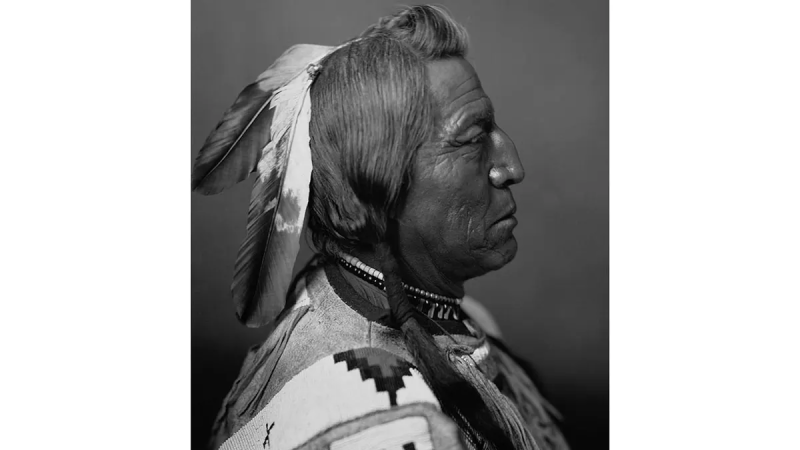
Blackfeet chief John Two Guns White Calf. (Hulton-Deutsch Collection/CORBIS/Corbis via Getty Images)
The Boston Football Braves found a new hometown field at Fenway Park, home of the Boston Red Sox, in 1933. The franchise changed its name to the Boston Redskins as a tribute to their hosts and to maintain their Tammany identity and uniforms.
The franchise then moved to Washington, D.C., in 1937 and for decades maintained its original indigenous identity.
MEET THE AMERICAN WHO WAS REVERED AS THE ‘PATRON SAINT’ UNTIL HE WAS CANCELED: LENNI LENAPE CHIEF TAMMANY
In the 1970s, the Washington Redskins looked for a new Native American icon to represent the team. The image of White Calf was championed by Blackfeet tribal leader Walter "Blackie" Wetzel.
The Redskins stepped onto the field with a portrait of Chief White Calf on team helmets for the first time in 1972.
The similarities between White Calf and the face on the logo are unmistakable. The black-tipped white feathers and braided hair hanging down over the ear are also similar to those found in pictures of White Calf and other Blackfeet.
The proud, prominent face of White Calf enjoyed widespread support and input from Native communities across the country. Even the NCAI, for a time, appeared to be among those who favored the indigenous icon.
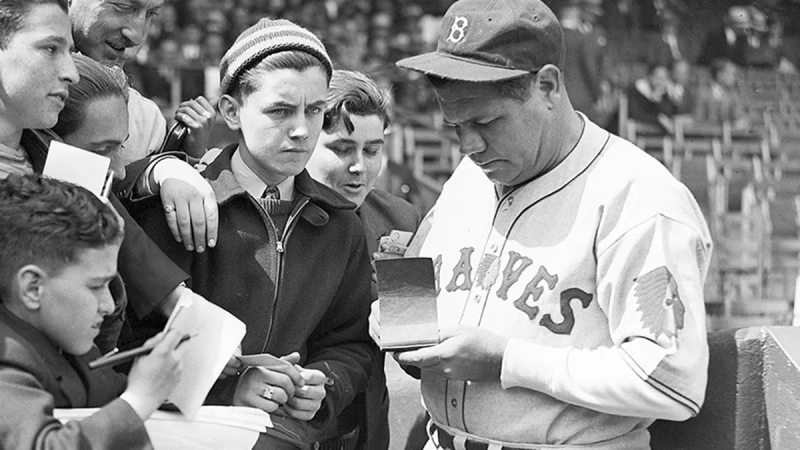
Babe Ruth is shown signing autographs for fans while playing his last season for the Boston Braves. The National League Braves were founded by James Gaffney, a member of Tammany Hall, who adopted the image of Lenni Lenape chief King Tammany as the team logo, seen on Ruth's left sleeve. The Washington Redskins were founded in 1932 as the Boston Braves and adopted the same Tammany imagery. (Getty Images)
Wetzel, after all, was president of the NCAI from 1961 to 1964, before the organization changed its priorities.
But times have changed, noted Billeaudeaux.
"You take away self-esteem when you take away someone’s history."
While White Calf once fought against Washington, D.C., to preserve the heritage of American Indians, said Billeaudeaux — the NCAI now fights in Washington, D.C., to erase the heritage of American Indians.
Chief White Calf scrubbed
The newer woke NCAI elevated its assault on Native American images in 2013, when it published a report dramatically called "Ending the Legacy of Racism in Sports & The Era of Harmful ‘Indian’ Sports Mascots."
The 29-page dissertation included a caustic 3,560-word history of the Redskins and its "legacy of racism."
Yet the NCAI Redskins' narrative is missing one notable name. It fails to mention Chief Two Guns White Calf — the face of the Redskins franchise for 48 years.
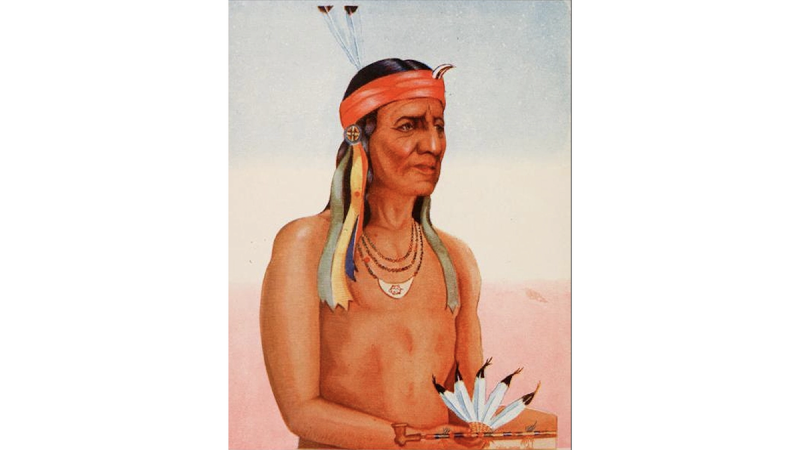
Lenni Lenape chief Tammaned, also known as Tammany, was dubbed the "Patron Saint of America" by the generation that fought for American independence. This is an idealized portrait by Fritz Bade from descriptions of the man, as it appeared in the 1938 book, "The Tammany Legend" by Joseph White Norwood. (Fritz Bade/Public Domain)
Fox News Digital made several attempts to ask the NCAI to explain the oversight and to share its viewpoints — most recently on Monday, Feb. 5 — but did not receive a response.
The failure to mention the once-revered face of the Redskins franchise, in a history of the Redskins franchise, betrays the group's mission to promote a woke agenda over Native American heritage, Billeaudeaux charged.
The report even cites historical events of 1932, including a Tom & Jerry radio cartoon, to offer conflated support of its claims that the Redskins name was racist. Yet the NCAI failed to note that the team changed its name to the Redskins only after moving to Fenway Park, home of the Red Sox.
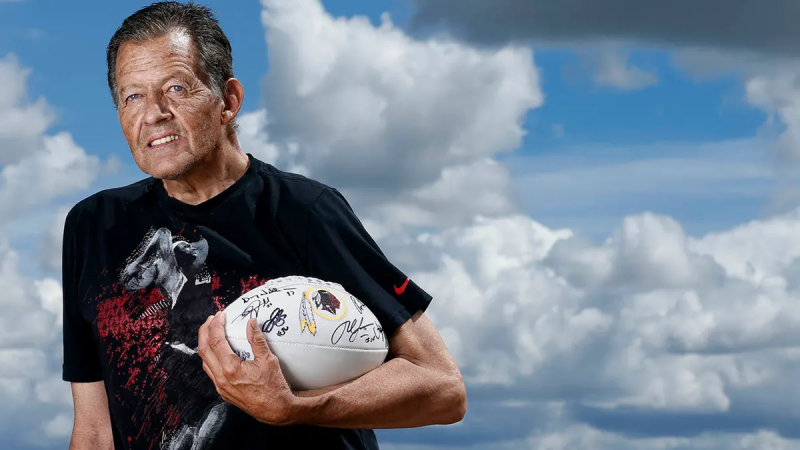
Donald Wetzel holds an autographed Washington Redskins football on June 27, 2014, in Great Falls, Montana. Wetzel, a member of the Blackfeet nation, was proud of the Washington Redskins logo that his father Walter designed in the 1960s and the team adopted in 1972. (Larry Beckner for The Washington Post via Getty Images)
The study also did not mention Tammany, the original inspiration for the Braves/Redskins Native American imagery when the franchise was founded in 1932.
The NCAI report also argued, in a widely repeated claim, that indigenous mascots on sports teams have led to low self-esteem among Native Americans.
A source document cited in the claim was a brief study of 71 Native American children in Arizona in 2004.
"They don’t put out accurate information because they don’t want people to know the real story."
But the claim that Native imagery creates low self-esteem is "a bald-faced lie," Walter "Red Hawk" Brown, chief of the Cheroenhaka Nottoway tribe of Virginia, told Fox News Digital.
The U.S. Army veteran said he was a fan of the Redskins until its history was erased. He added, "You take away self-esteem when you take away someone’s history."
He also said, "If things keep going the way they're going now, in 100 years there will be nothing left of our history."
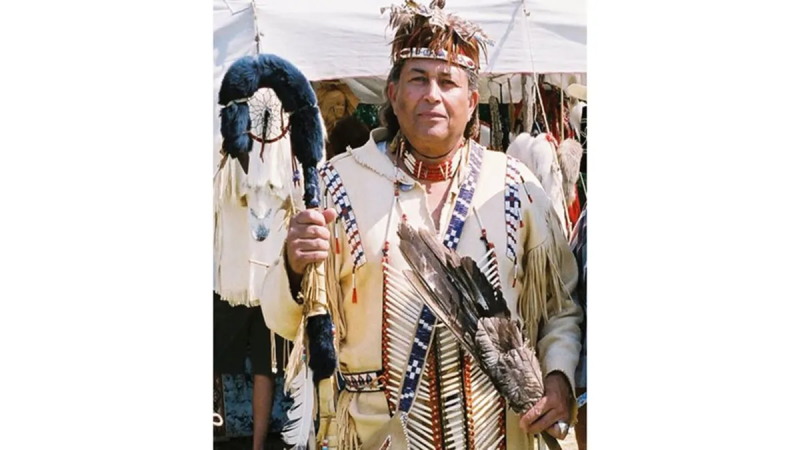
Walter "Red Hawk" Brown, chief of the Cheroenhaka Nottoway tribe of Virginia, refuted claims by the National Congress of American Indians that Native American logos in sports harm the self-esteem of those in Native American communities. Brown spent 28 years as a U.S. Army officer. (Courtesy Cheroenhaka Nottoway tribe/Walter Brown)
Redskins historian Billeaudeaux called the NCAI's version of events a "misinformation campaign" and "information laundering."
The NCAI tacitly admitted in its own report that White Calf's omission was not a mistake.
WASHINGTON COMMANDERS ‘FITTING NAME FOR OPPRESSORS’ NATIVE AMERICAN GROUP CLAIMS IN NEW FEDERAL LAWSUIT
"Mr. Wetzel was not president of NCAI at the time he took these reported actions and these actions were not taken on behalf of NCAI’s members," the organization claimed, connecting Wetzel with the Redskins portrait but failing to name the man it portrayed.
The NCAI's incomplete history had the intended effect. The accusations of racism against the Redskins organization caught the attention of congressional leaders and President Obama — and stoked public outrage.
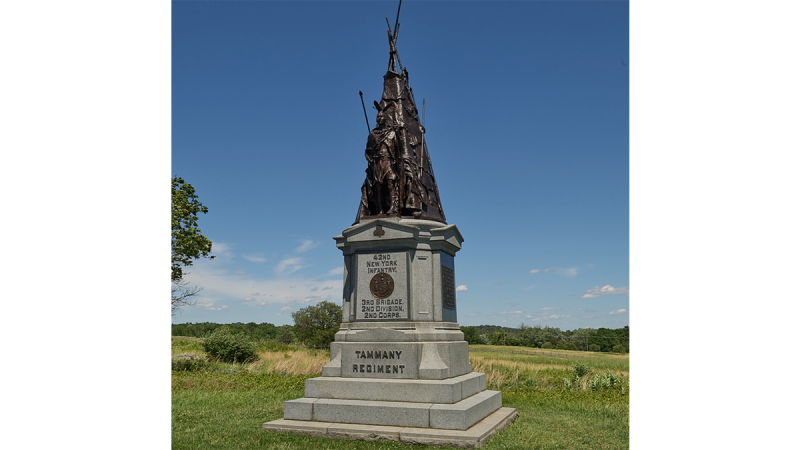
The 42nd New York Volunteer Infantry Regiment was commonly known as The Tammany Regiment, in honor of the Lenni Lenape native who helped inspire the birth of the new nation. Tammany's image adorns a battlefield monument dedicated to the 42nd New York Volunteers at Gettysburg. (Library of Congress/Public Domain)
The Redskins erased the image of White Calf from the NFL seven years after the NCAI erased him from Native American history.
White Calf was not only scrubbed from the NCAI's 2013 history of the Redskins, but multiple searches on the organization's website also produced no mention of him.
"The whole thing has been a sham since the beginning," said NAGA president Davidson, expressing her viewpoint. "They don’t put out accurate information because they don’t want people to know the real story."
Pro-Native American groups fight to save White Calf
As recently as 2016, a poll by The Washington Post revealed that 90% of Native Americans supported the Redskins name and logo.
NATIVE AMERICANS LEADING REDSKINS PETITION OUTRAGED THAT A WASHINGTON COMMANDERS REP CALLED THEM ‘FAKE GROUP’
Over the past few years, communities across the nation have been stepping up to save their Chief White Calf Redskins heritage and other Native American images targeted by cancel culture and its woke proponents.
"They're trying to erase or eradicate Native American history," said Rick Spiegel, an activist in Sandusky, Michigan, who is leading a grassroots effort to reclaim the Redskins nickname and its White Calf portrait logo at the local high school.
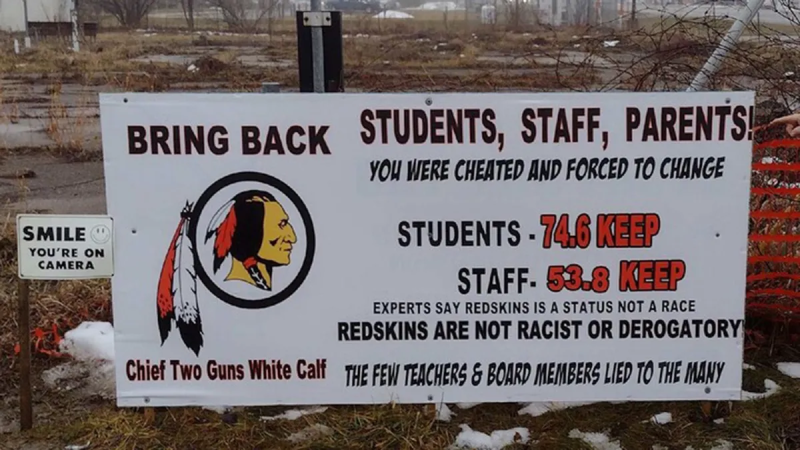
Residents of Sandusky, Michigan, were angry that the local high school was forced to erase its Redskins identity despite popular support. The Redskins image is not a stereotype or mascot, noted local activist Rick Spiegel, but the portrait of celebrated Blackfeet Chief John Two Guns White Calf. (Courtesy Rick Spiegel)
Voters in Sandusky recently recalled three school board members who voted to eliminate the Redskins. They've since elected three new pro-Native American school board members who campaigned to bring the Redskins back to Sandusky High School.
Spiegel said that nearly 90% of registered voters in the town who responded to a mail-in survey (1,900 of 2,100) supported the traditional Redskins — as did 74% of students and 53% of teachers at the school in another survey.
CLICK HERE TO GET THE FOX NEWS APP
Despite overwhelming public support for the Redskins, Sandusky teams are now called the Wolves.
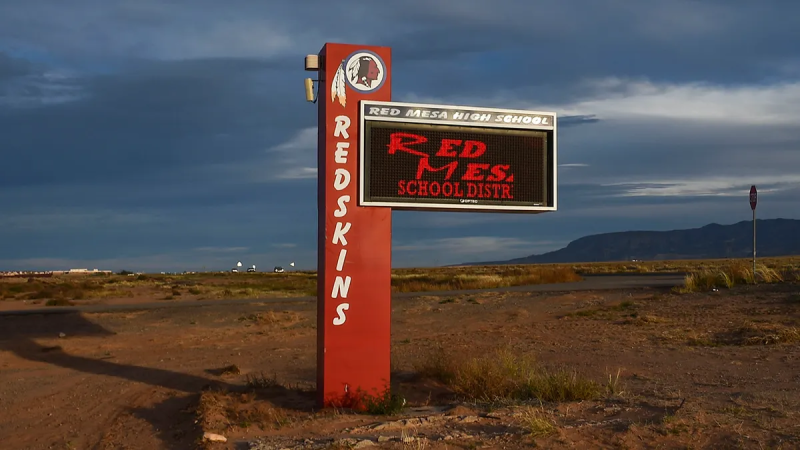
The digital display sign bearing the Redskins logo is seen outside Red Mesa High School on Oct. 15, 2014, in Red Mesa, Arizona. (Ricky Carioti/The Washington Post via Getty Images)
High schools around the nation with Native-majority student populations have displayed recent public support for their White Calf-portrait Redskins.
The Red Mesa (Arizona) High School Redskins installed a new football field last year with their White Calf Redskins logo splashed across the 50-yard line.
CLICK HERE TO SIGN UP FOR OUR LIFESTYLE NEWSLETTER
And students at Wellpinit (Washington) High School voted to keep the school's Redskins mascot in March 2023, rejecting efforts to erase it.
"It’s a very powerful word for us," student Smokey Abrahamson told the Spokesman-Review last March, after leading the Welpinit Redskins boys basketball team to a state championship.
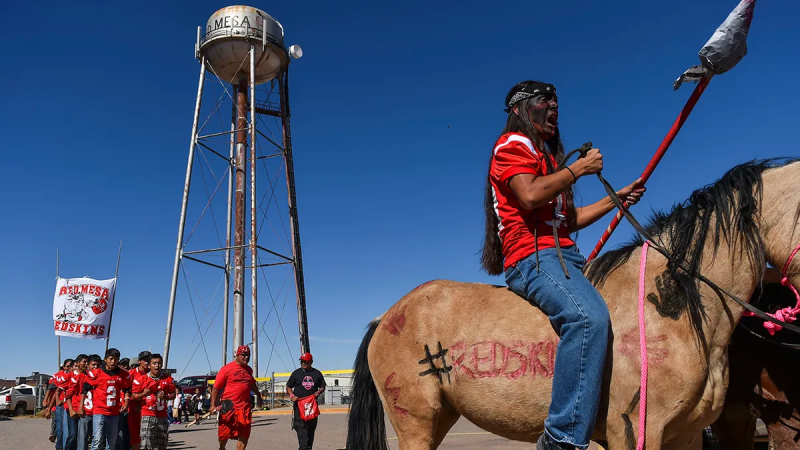
Red Mesa football player Kai Lameman mounted on a mustang horse cheers as he leads his Redskins football team during the homecoming parade at Red Mesa High School on Oct. 16, 2014, in Red Mesa, Arizona. Red Mesa is a small Navajo school in northeast Arizona. (Ricky Carioti/The Washington Post via Getty Images)
Students also "proudly chanted ‘Redskins power’" at a parade to honor the championship team, the Spokesman-Review reported.
"The people that I’ve talked to — they have a sense of pride about our name, and about our mascot being the Redskins."
"The people that I’ve talked to — they have a sense of pride about our name, and about our mascot being the Redskins," Taylor Wiebener, athletic director at Native-majority Kingston (Oklahoma) High School, told KXII.com in 2020.
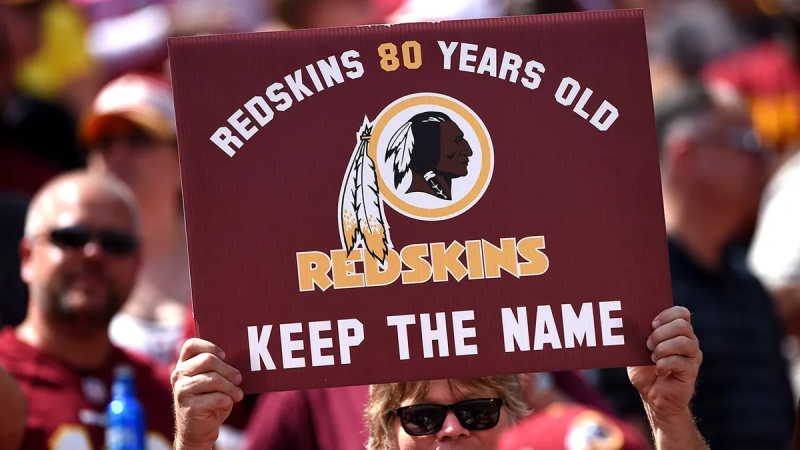
A Washington Redskins fan holds up a sign to keep the Redskins name before the team played the Jacksonville Jaguars at FedExField on Sept. 14, 2014, in Landover, Maryland. (Patrick Smith/Getty Images)
And, according to activist and historian Billeaudeaux, students and residents of Donna, Texas, and McCloud, Oklahoma, also have repeatedly voiced support for their Redskins identity.
For more Lifestyle articles, visit www.foxnews.com/lifestyle.
Disclaimer: The copyright of this article belongs to the original author. Reposting this article is solely for the purpose of information dissemination and does not constitute any investment advice. If there is any infringement, please contact us immediately. We will make corrections or deletions as necessary. Thank you.



